For National Jewel Day, CHM costume collection manager Jessica Pushor shares a bit about the jewelry in our Costume and Textiles Collection and highlights the variety of our holdings.
The costume collection of the Chicago History Museum comprises an estimated 50,000 objects related to the fashion and clothing history of Chicago. Within this astounding collection of fashion history are an estimated 2,000 pieces of jewelry and watches. Some of these pieces were made in the city by skilled jewelers and craftspeople, while others came from far off locations, brought back as gifts or passed down through generations of families before being donated to the collection. The pieces in the jewelry collection are of vastly different materials and styles that reflect the changing fashions of peoples across the past two hundred plus years.
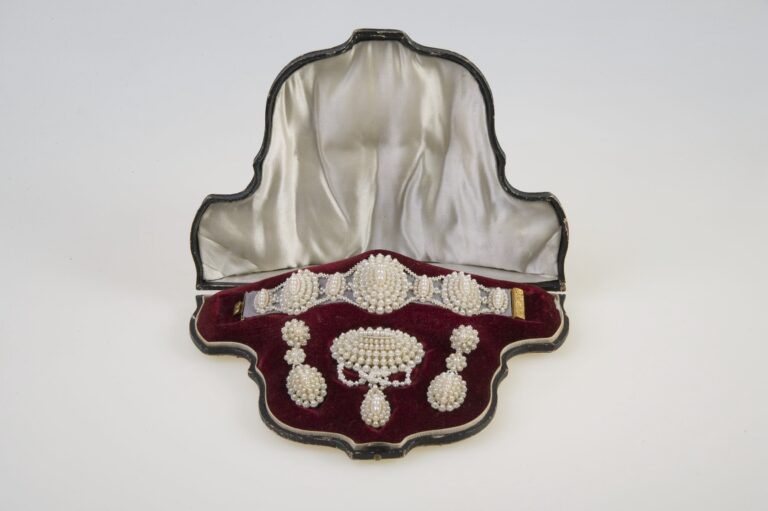
Parure, 1855. Pearls, silver. Maker unknown. Gift of Mrs. William H. Hazlett. 1992.246a-f. ICHi-55020
This parure includes earrings, a necklace, and a brooch, all in its original brown leather presentation case lined with red velvet. It belonged to the donor’s maternal grandmother, Elizabeth Jane Swetting, who received it as a wedding gift from her husband Joseph E. Gary, the judge who presided over the Haymarket trial in 1886.
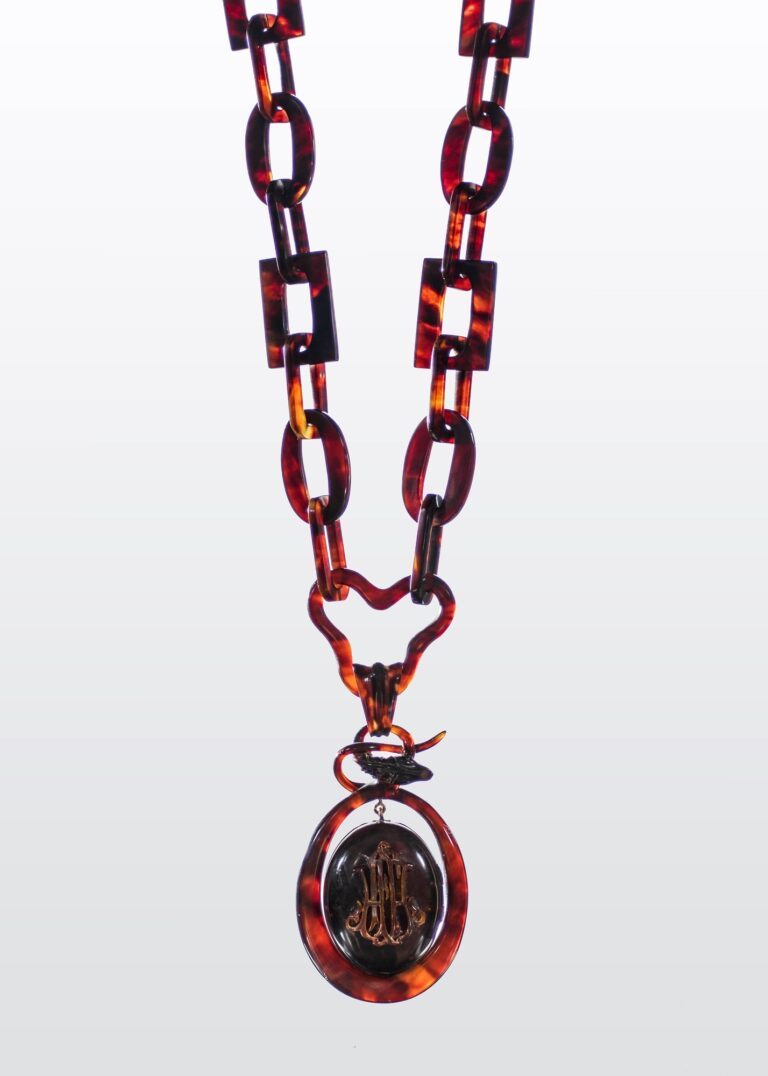
Mourning necklace and pendant locket, c. 1865. Tortoiseshell. United States. Gift of Mrs. Mason Bross. 227-3H. ICHi-170008
This Victorian-era mourning necklace features a large, oval-shaped locket hung from a large carved chain. On the locket is a high-relief monogram “H. F. H.” carved in scrolling script, which is encircled by a carved ouroboros, a motif of a snake eating its own tail, a symbol of life and death in Victorian jewelry.
The donor, Mrs. Mason Bross (née Isabel F. Adams), was the daughter of George E. Adams, a Chicago lawyer and Illinois congressman. Her husband, Mason Bross, was also a Chicago lawyer, and they had one son, John Bross.
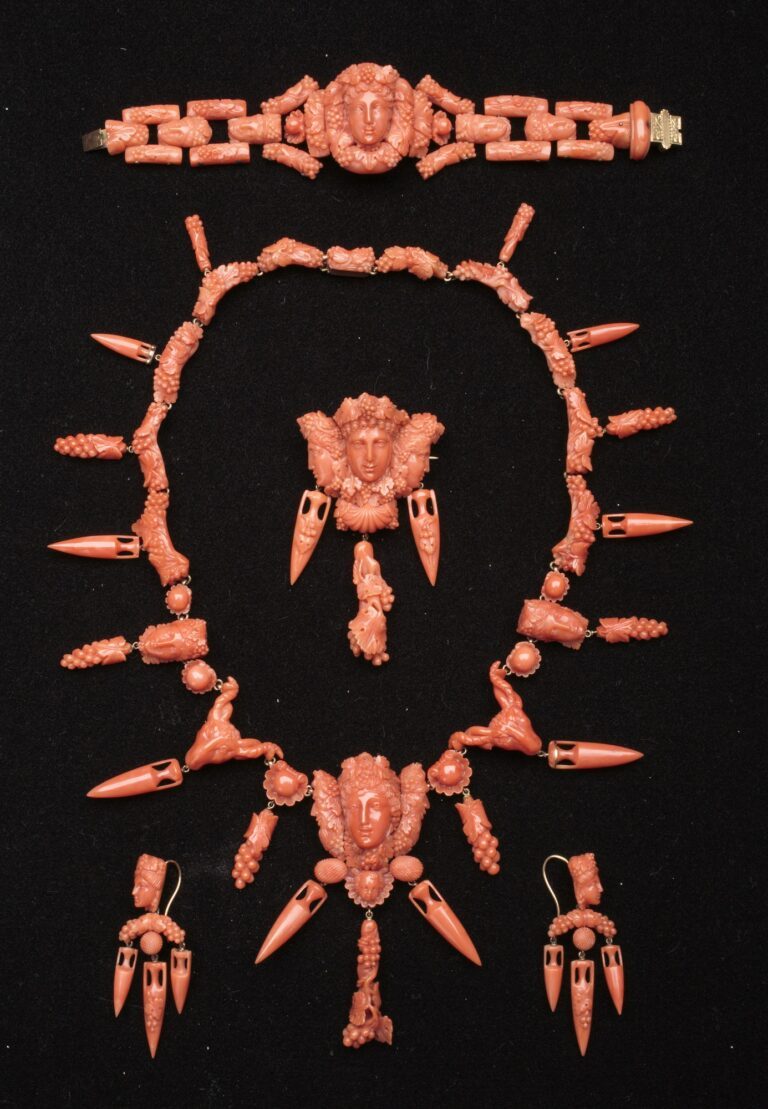
Parure with necklace, bracelet, pair of pendant earrings, brooch, and bracelet, c. 1870. Coral, gold. Gift of Mrs. William S. Jenks. 1938.121. ICHi-074304, ICHi-074300
Coral has long been a popular material due to its amuletic associations and therapeutic properties, but it first gained popularity as a fashionable material between 1660 and 1798. Coral use in jewelry continued to fall in and out of fashion throughout the Victorian era.
This set, featuring bacchantes and amphorae-shaped pendants and drops, was likely made in Italy by the firm Francesco De Simone & Figlio. The company, founded in 1855, is based in the renowned Spanish Quarters of Torre del Greco, the heart of coral jewelry near Naples. Torre del Greco has been renowned since the 17th century for being a major producer of coral jewelry and cameo brooches.
The set belonged to Mrs. Edwin L. Gillette, mother of the donor, who came to Chicago in 1859.
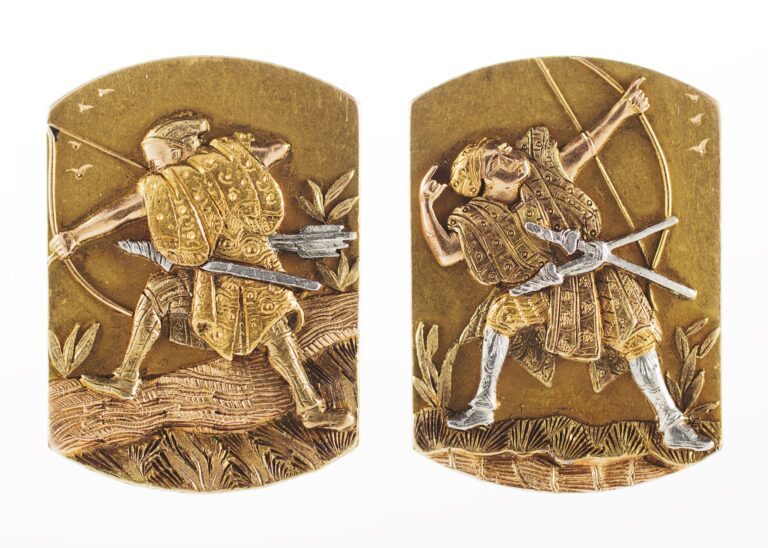
Cuff links, c. 1880. Gold. Tiffany & Co., United States. Gift of Mr. Robert Allerton. 2053-7H. ICHi-170003
With the signing of the Treaty of Kanagawa in 1854, Japan opened trade to the United States, which began the flow of Japanese ornamentation and motifs into Western design. Tiffany & Co., an early adopter of Japanese style, was successful at combining Japanese themes and techniques while using materials that appealed to Western consumers.
These cufflinks were donated to the Museum by Robert Henry Allerton (1873–1964), son and heir of First National Bank of Chicago cofounder Samuel Allerton. Robert was a philanthropist who served as a trustee and honorary president for the Art Institute of Chicago.
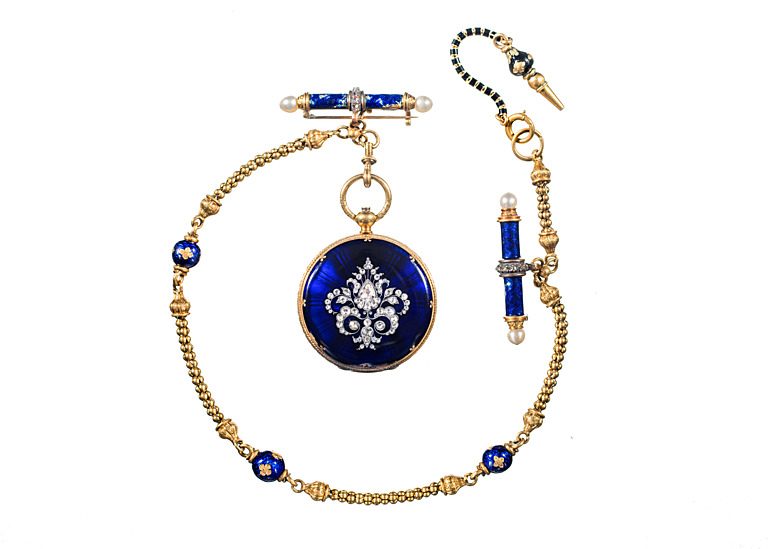
Pocket watch and chain, 1860–1900. Gold, enamel, and diamonds. Patek, Philippe & Co., Switzerland. Gift of McCormick Estates. 1957.1008. ICHi-170007
This women’s pocket watch and chain has a dark blue enamel case set with diamonds, a white porcelain face with black Roman numerals and hands, and two blue enamel pins set with diamonds and pearls.
Patek Philippe is a luxury watch manufacturer established in 1839 in Geneva, Switzerland, as Patek, Czapek & Cie by Antoine Norbert de Patek and François Czapek. Adrien Philippe, a French watchmaker who invented the keyless winding mechanism, joined the company in 1845. In 1851, the company name officially changed to Patek, Philippe & Cie.
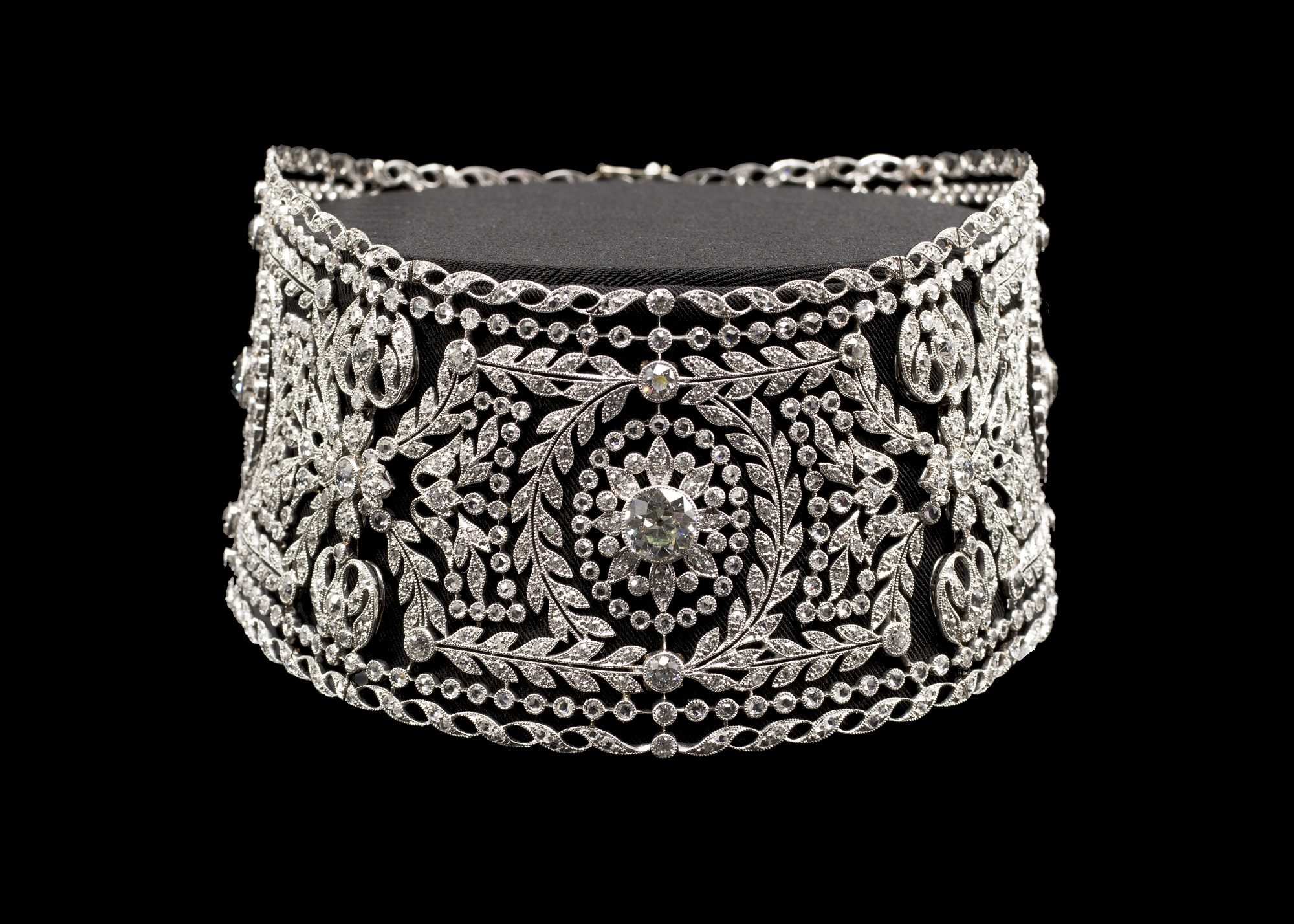
Necklace, c. 1900. Diamond, platinum. Maker unknown. Gift of Gordon Palmer. 1980.56a. ICHi-073850
While Bertha Palmer’s clothing dazzled in their own right, her jewel-encrusted accessories completed many ensembles. Mrs. Palmer received two diamond chokers, or dog collars, for the 1900 Paris Exposition; this one holds 1,236 diamonds. The Museum received this necklace into its collection with a broken clasp. As the clasp usually contains the engraving of a manufacturer’s mark, we unfortunately have no way of identifying the maker.
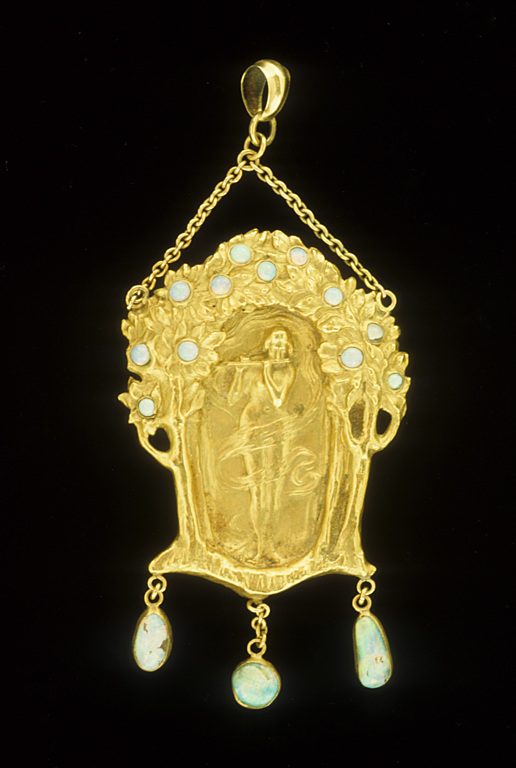
Pendant, c. 1905. Gold, opal. A. Fogliata, United States. Gift of Mrs. Charles Batchelder. 1977.87.2 . ICHi-177697
At the center of this gold pendant is a gold bower of leaves set with tiny round opals surrounding a repoussé figure of a nymph with flowing hair playing a lute. Three opals are suspended from the bottom of the pendant with fine gold chains.
Annibale Fogliata was an Italian-born jeweler and metalsmith who came to Chicago in 1904 to teach metalworking at Hull-House. He eventually left Chicago in 1907 for NYC.
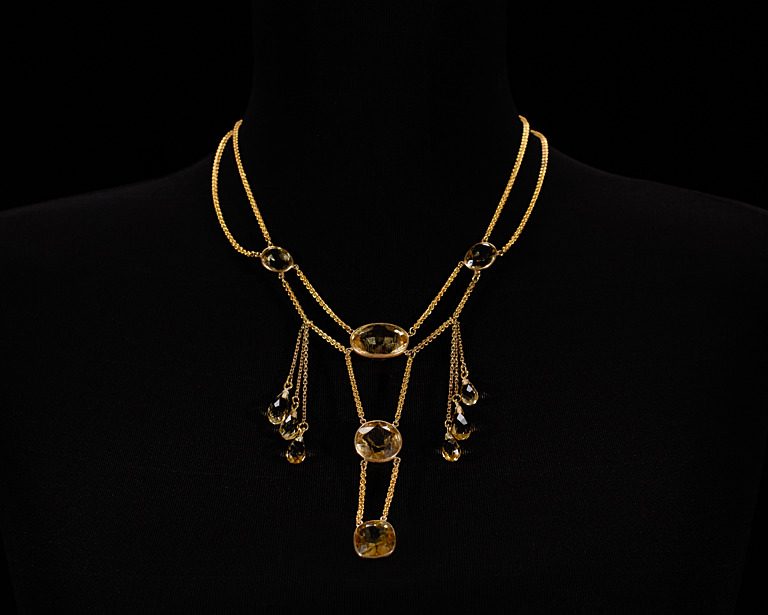
Necklace, c. 1910. Gold and yellow topaz. Frances Macbeth Glessner, Chicago (United States). Gift of Mrs. Charles F. Batchelder. 1977.87.1. ICHi-69798
The maker of this necklace, Frances Macbeth Glessner, was an admirer of Fogliata’s work, purchasing pieces from him as gifts and to wear herself and even taking silversmithing lessons with him in 1905. This piece, comprising gold chains and yellow topaz stones, was designed and created by Glessner as a gift for her sister Anna Macbeth Robertson.
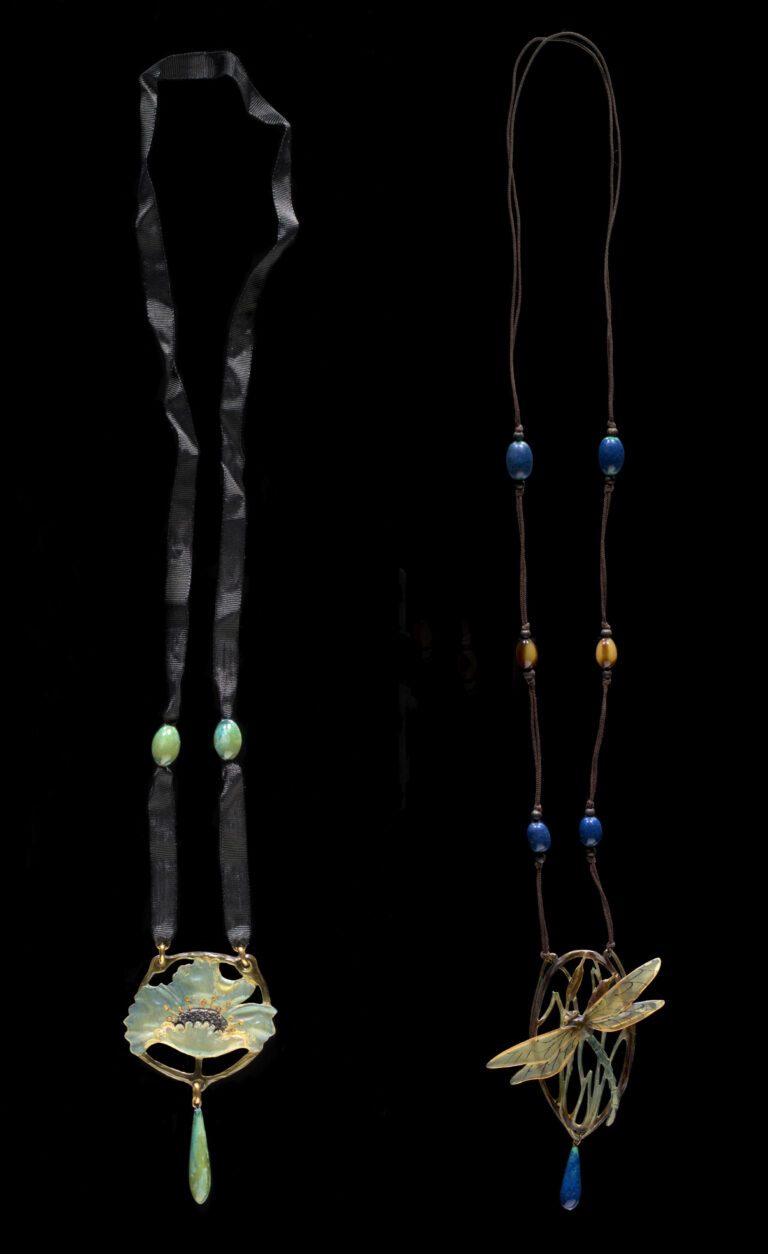
Left: Necklace, c. 1915. Horn and celluloid. Georges Pierre, France. Gift of Miss Neva Douglas. 1976.81.2. ICHi-085061. Right: Necklace, c. 1915. Horn, glass, silk. Elizabeth Bonte, France. Gift of Miss Neva Douglas. 1976.81.1. ICHi-085057
These two Art Nouveau necklaces are similar in that they both have a carved horn pendant with beads on the sides. The one on the left is by Georges Pierre, whose work can be identified by his initials “G.I.P.,” and the one on the right is by Elizabeth Bonte, who studied at the École nationale supérieure des Arts Décoratifs in Paris and was one of the few women jewelers during that time. Once competitors, Bonte and Pierre merged their workshops and worked together until 1936.
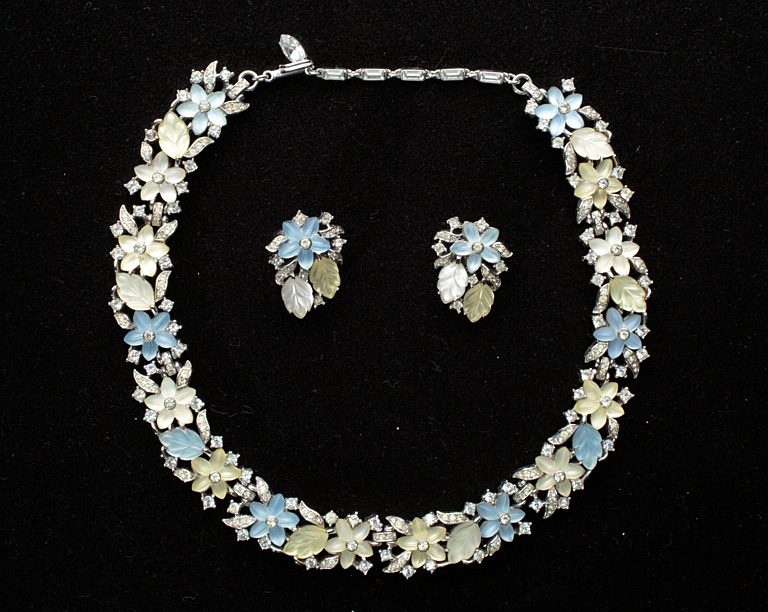
Parure, c. 1960. Silver, rhinestones, glass beads. Trifari, United States. Mrs. Charles Chaplin, 1976.241.148a-c. ICHi-74288.
This parure is made of silver metal with rhinestones and blue and yellow glass beads in the shape of flowers and leaves. Trifari was founded in the 1910s by Gustavo Trifari, an Italian immigrant and son of a Neapolitan goldsmith. The success of Trifari, and the reason for its collectability today, is most often credited to French designer Alfred Philippe, the company’s chief designer from 1930 until 1968. His use of invisible settings for stones, which he originally developed for Van Cleef & Arpels, added a level of craftsmanship and technique that had not been previously seen in costume jewelry.
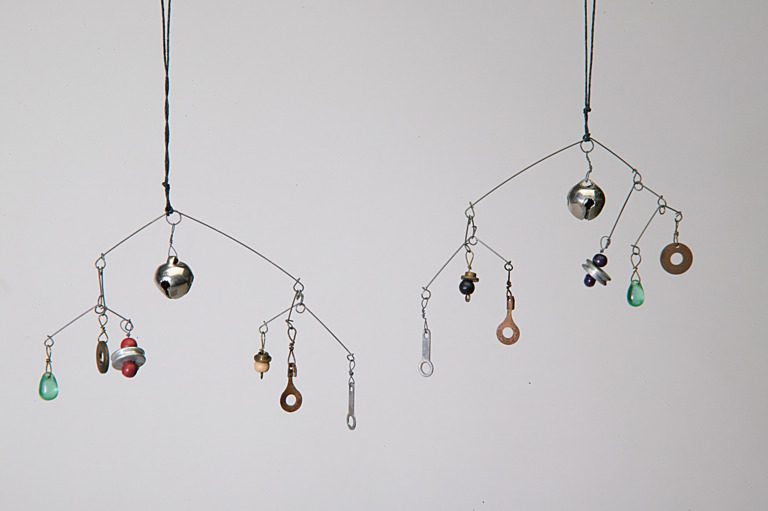
“Shandelier” earrings, c. 1950. Metal, beads, string. Jano Walley, Chicago (United States). Gift of Mrs. Jano Walley. 1985.708.27a-b. ICHi-066576
These earrings represent the idea of “total design” promoted by Chicago’s Institute of Design. They were made by artist Jano Walley when she was a student there. A loop of string is attached at center apparently intended to loop over the ear. After finishing her studies, Walley became an artist and taught jewelry and ceramics at various Midwest art institutions, including Black Mountain College and the University of Illinois at Navy Pier (now University of Illinois Chicago). Both Jano and her husband, John Walley, were major contributors to the Chicago arts scene in the 1940s–50s and often held arts-related events at their studio and apartment.
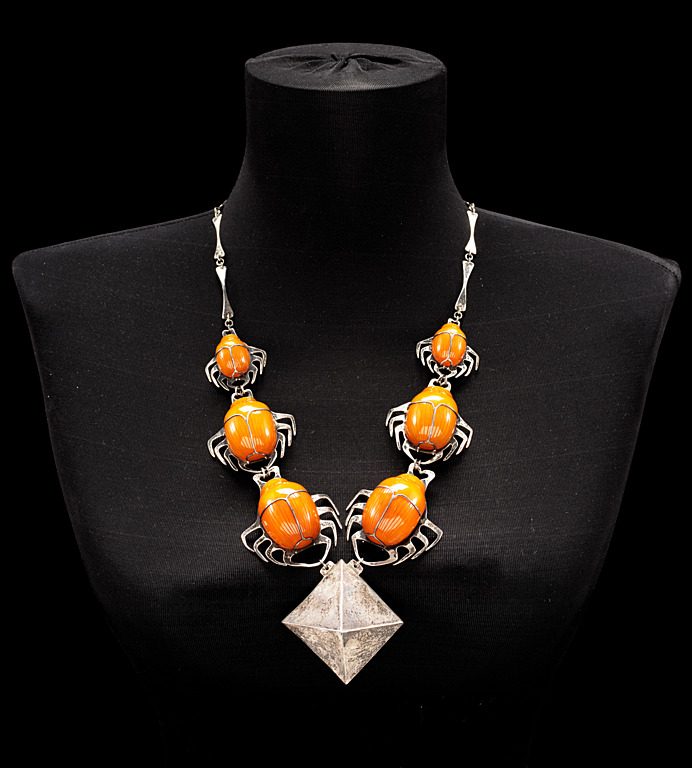
Necklace, c. 1975. Silver and amber. Robert Mucklow, Chicago (United States). Gift of Robert Staples and Barbara Fahs Charles. 2013.97.1. ICHi-073636
The maker of this necklace, Robert Mucklow (b. 1952) was born in Chicago and worked as a janitor and later as a polisher in a wedding ring factory before pursuing a metalsmith career. During the 1970s, he operated a studio in south suburban Park Forest and won several awards at local art fairs with his unique pieces of jewelry that incorporated organic materials, especially amber and ivory, using traditional metalsmithing techniques.
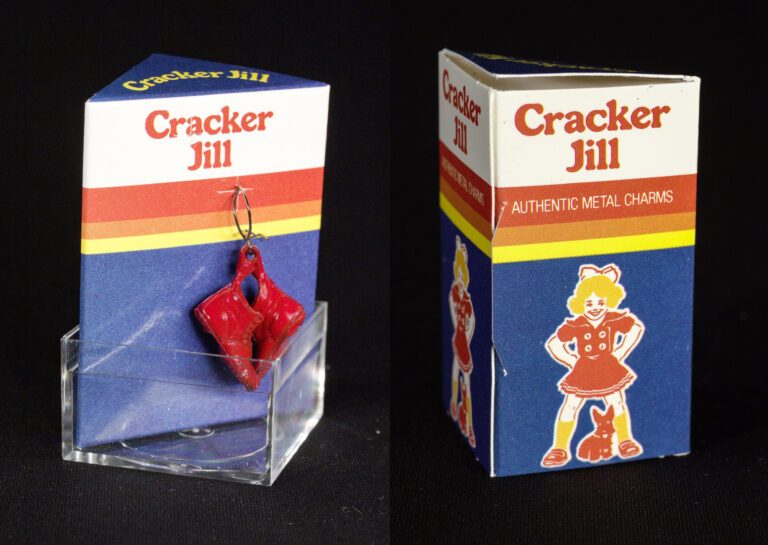
Cracker Jill earrings, c. 1982. Tin. SS/F Designs, Chicago (United States). Gift of Peggy Shure and Lynn Foster. 1983.33.2a-b. Left: ICHi-170771, right: ICHi-170774.
SS/F, Inc. was a jewelry firm founded in 1976 by Peggy Shure and Lynn Foster. The Cracker Jill line was created when Shure discovered barrels of metal Cracker Jack toys and their original molds when visiting her husband’s family business, the Tootsietoy Factory of Chicago. The Tootsietoy Factory created the original metal toys used as Cracker Jack toy prizes from 1894 to 1942 but replaced them with paper and plastic toys during World War II.
The Cracker Jill logo was created by Mike Gournoe, a packaging designer and neighbor of Shure, and was based on the “Little Orphan Annie” character. The charms were painted in nontoxic colors and strung on black twill cord for necklaces or from small hooks for earrings. These earrings retailed for $3 in 1982.
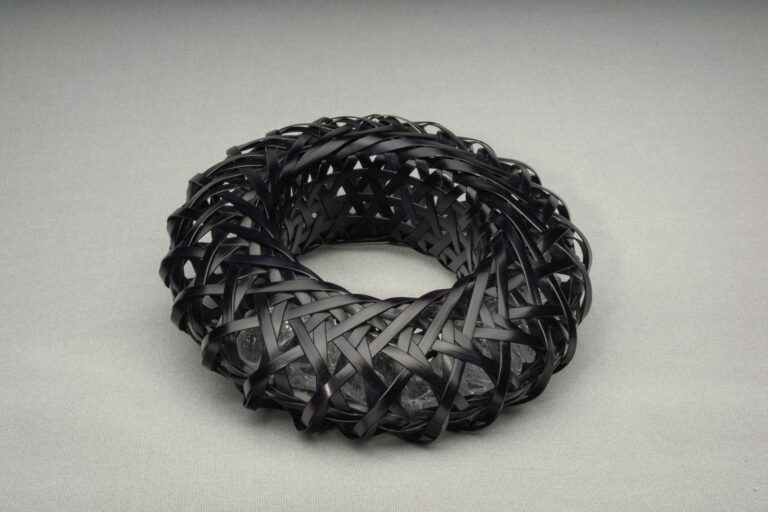
Bracelet, c. 1987. Bamboo, black lacquer, quartz crystal stones. Tina Chow, United States. Gift of Sheila Dunteman. 2017.14.1. ICHi-170844
Tina Chow (1950–92) was a model, muse, and much more—she was also a restauranteur, sculptor, and jewelry designer. Born Bettina Louise Lutz in Ohio to a German American father and Japanese mother, her family moved to Japan in the 1960s, where she began her modeling career. In the 1970s, she married Michael Chow, founder of the Mr. Chow restaurant chain. In the mid-to-late 1980s, Chow began to experiment with the healing properties of crystals and holistic medicine. Her most famous design, the ‘Kyoto’ bracelet, was created around the time Chow was diagnosed with HIV. The design was created in collaboration with the Japanese master bamboo craftsman, Kosuge Shochikudo. Enclosed in the bamboo design are seven rose quartz crystals known for their healing properties. This bracelet was purchased in the early 1990s at the avant-garde Chicago clothing store Ultimo at 114 East Oak Street, which was run by Joan Weinstein (1935–2009). Chow died at age 41 due to complications from AIDS.